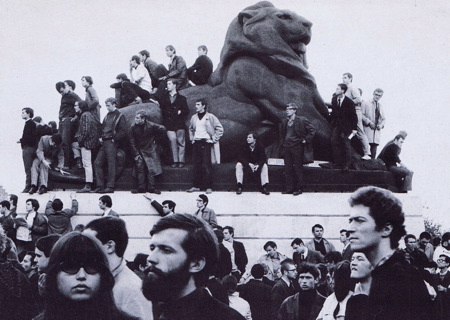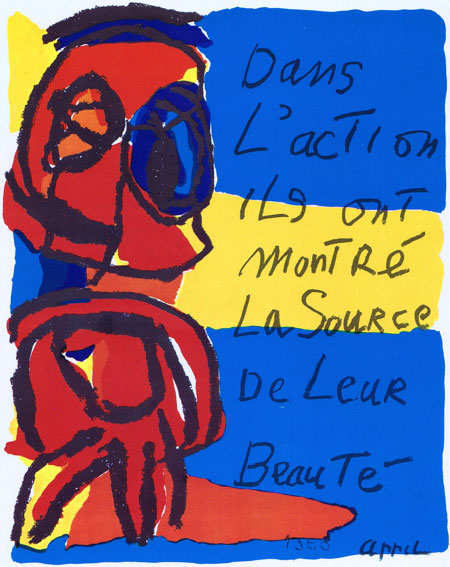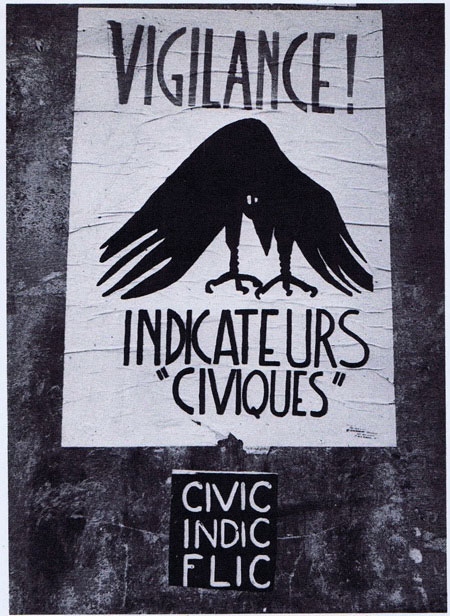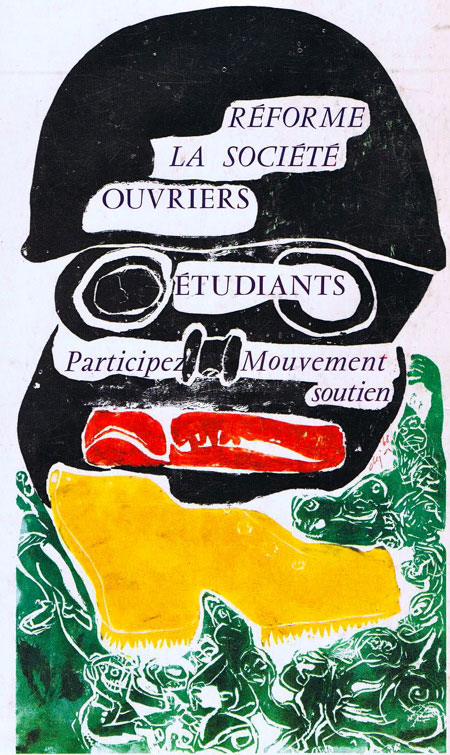Scanning Around With Gene: Viva la Révolution!
It seems as though every generation or so, there’s some sort of widespread civil uprising, the most recent being the Occupy Wall Street movement in cities throughout the United States and, indeed, the world. As I’m just old enough to remember the civil unrest of the late 1960s, I thought I’d take a look back at one of the more significant protests of that time: the general strike and associated activities that took place in France from roughly May to June of 1968.
Today’s social movements often involve digital social media. But in 1968 there was no text messaging, tweeting, or Facebook posting. Much of the communication process was through graffiti and street posters. I recently came across some of the posters and images from the May 1968 civil unrest in a journal called Lithopinion, published by the Amalgamated Lithographers of America that same year. I’m not a French speaker so I can’t adequately translate these posters, but the artwork is interesting despite the language barriers. Click on any image for a larger version.


The protests in France began as a series of student movements and eventually escalated into a general work strike involving nearly 11 million workers throughout the country.


Many saw the protests as a way to shake up the country’s traditional society and morality, with a focus on education and employment. The period began with a series of student strikes in Paris, which were met with police confrontation and violence.


The police and government action created sympathy for the protestors, and more and more workers joined in. At one point it seemed as if the government of then-president Charles de Gaulle might fall.


The violence didn’t last very long and new elections were held to replace the National Assembly, which de Gaulle dissolved.


Though the protests failed on some levels, the events of Mai 68 are often cited as a watershed moment in French history and the beginning of a more liberal attitude among many French citizens and a shift away from conservative moral ideas.


Protest movements are typically accompanied by grassroots efforts at communication — whatever is the standard of the day, from word-of-mouth to printed materials to electronic communications and “human megaphones.”


Freedom of speech is something we all take very seriously, and it’s always interesting to see how that right manifests itself under difficult circumstances.


Horrors! I remember all this, though viewed from afar, It’s reminiscent of today’s upwelling of protest against the excesses of finance and the resulting devastation of community and environment. Unfortunately, much of the coverage seems now to focus on the “medium”, allowing the debate on the message to go unrealized. In large part, what happened in France opened many doors, including those to the same kind of economic shenanigans to which the rest of the world is now subject, and Sarkozy governs in the tradition of De Gaulle in many ways. Seeing Cohn-Behndit’s mug there is funny, because he is still around with EE-Les Verts in the European Parliament. The posters seem still germane, but dated, of course, somewhat like France (a country I love for much of its culture, food, wine, literature, fine arts, music) but which has an official view of itself inflated beyond reason). Thanks for stirring all this up: the power of a good display…
I wish our local protesters could come up with such classy graphics.
Thanks for this Gene.
One wonders if any good examples of graphic communication are coming out of the Occupy movement. The officers at UC Davis certainly have some effective orange material to contribute to a collective effort in that direction.